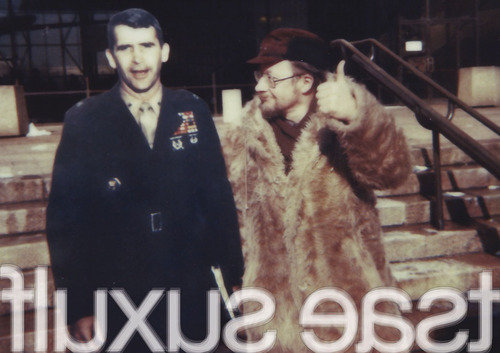Fluxus East
dal 29/11/2007 al 12/1/2008
Segnalato da
Gábor Altorjay
Eric Andersen
Azorro
Robert Filliou
Gyorgy Galantai
Tibor Hajas
Geoffrey Hendricks
Dick Higgins
Tadeusz Kantor
Danius Kesminas
Milan Knizak
Alison Knowles
Julius Koller
Jaroslaw Kozlowski
Vytautas Landsbergis
George Maciunas
Jonas Mekas
Larry Miller
Ben Patterson
Mieko Shiomi
Slave Pianos
Tamas St. Auby
Endre Tot
Gábor Toth
Nomeda & Gediminas
Urbonas, Jiri Valoch
Ben Vautier
Branko Vucicevic
Emmett Williams
Petra Stegmann
29/11/2007
Fluxus East
Contemporary Art Centre - CAC, Vilnius
Fluxus Networks in Central Eastern Europe. The exhibition shows parallel developments and artistic practices inspired by Fluxus, which are still adopted by some young artists today. Besides the classic Fluxus objects, the display will include photographs, films, correspondence, secret police files, interviews and recordings of music that document the presence of Fluxus in the former Eastern Bloc. Curated by Petra Stegmann.

Curator: Petra Stegmann
Exhibition architecture by: Andrea Pichl
Artists: Gábor Altorjay, Eric Andersen, Azorro, Robert Filliou, György Galántai,
Tibor Hajas, Geoffrey Hendricks, Dick Higgins, Tadeusz Kantor, Danius Kesminas,
Milan Knizák, Alison Knowles, Július Koller, Jaroslaw Kozlowski, Vytautas
Landsbergis, George Maciunas, Jonas Mekas, Larry Miller, Ben Patterson, Mieko
Shiomi, Slave Pianos, Tamás St. Auby, Endre Tót, Gábor Tóth, Nomeda & Gediminas
Urbonas, Jiri Valoch, Ben Vautier, Branko Vucicevic, Emmett Williams among many
others
During the opening: performance OPUS 01130 – A Conversation by Eric Andersen and
perfomance 4'33" Generation Gap (Variation 3 - Pravda) by Tamás St. Auby
Lecture by prof. Vytautas Landsbergis: Friday 7 December, 4.30 pm
Fluxus is well-known as an (anti-)artistic, international network with centres in
the USA, Western Europe and Japan. But what about this "intermedia" art -- art
encompassing music, actions, poetry, objects and events -- beyond the "Iron
Curtain"? What echo did Fluxus find in the states of the former Eastern Bloc, and
what parallel developments existed there?
As a "programme of action", Fluxus -- according to its self-styled "chairman", the
exiled Lithuanian George Maciunas in a letter supposedly to Nikita Chruscev -- was
predestined to bring about unity between the "concretist" artists of the world and
the “concretist” society of the USSR. Maciunas planned Fluxus as a collective based
on the model of the Russian LEF (Leftist Arts Front). But these plans -- e. g. for a
performance tour by the artists on the Trans-Siberian Railway --, developed with
polished communist rhetoric in manifestos and letters, were to remain no more than a
utopia.
After 1962, a different FLUXUS EAST developed through creative exchange between
Fluxus artists and artists/musicians of the former Eastern Bloc, leading to events
including Fluxus festivals in Vilnius (1966), Prague (1966), Budapest (1969), and
Poznan (1977).
FLUXUS EAST represents a first stocktaking of the diverse Fluxus activities in the
former Eastern Bloc; the exhibition shows parallel developments and artistic
practices inspired by Fluxus, which are still adopted by some young artists today.
Besides the "classic" Fluxus objects, the display will include photographs, films,
correspondence, secret police files, interviews and recordings of music that
document the presence of Fluxus in the former Eastern Bloc. As an interactive
exhibition, FLUXUS EAST aims to facilitate a profound encounter with ideas, works
and texts -- some presented as facsimiles to permit intense study; it is also
possible to play at FLUX PING PONG.
Further exhibition venues: Bunkier Sztuki, Kraków (February 7 - March 30, 2008),
Ludwig Múzeum, Budapest (April 17 - June 1, 2008), Kumu Art Museum, Tallinn
(September 4 - November 23, 2008). http://www.fluxus-east.eu
Opening: Friday 30 November, 6 pm
Contemporary Art Centre
Vokieciu 2, LT - 01130, Vilnius



